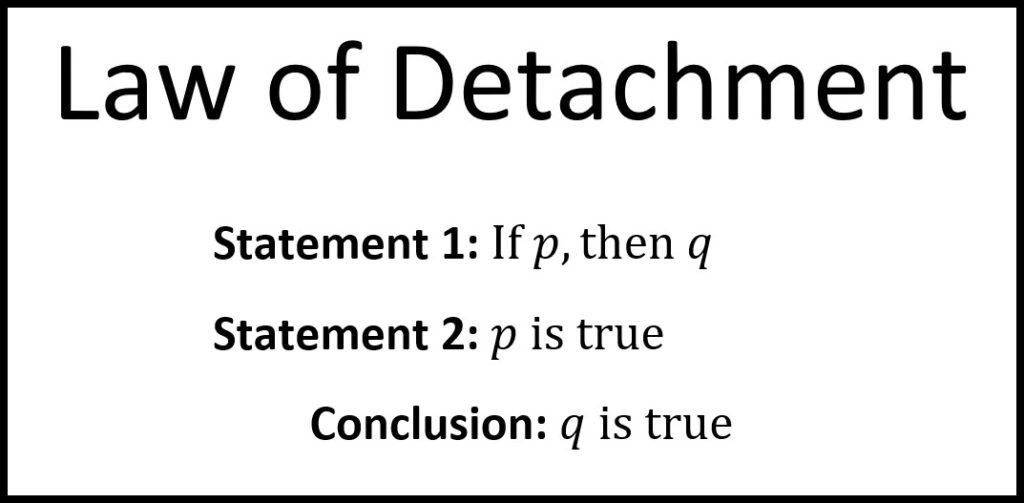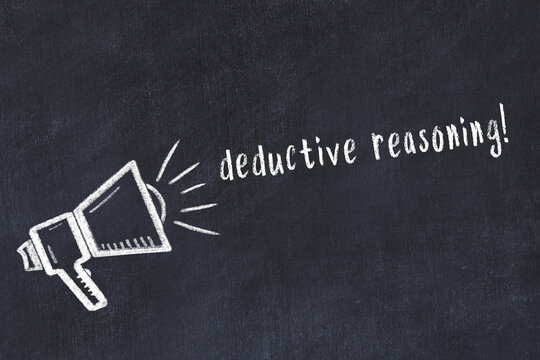
The discipline of logic is concerned with the analysis of reasoning and its practises. The ability to analyse arguments, identify good and incorrect types of reasoning, and develop our own persuasive arguments is greatly aided by the study of logic. The rule of detachment is one of the most useful tools in logic since it enables us to derive inferences based on if-then sentences.
What is a conditional statement?
Where p and q are propositions, the sentence “if p, then q” is called a conditional statement. The antecedent or hypothesis is referred to as p, while the consequent or conclusion is referred to as q. If the statement’s antecedent is true, then the statement’s consequent must be true as well.
As an example, consider the if/then sentence, “If it rains, then the grass will be wet.” Here, “it rains” serves as the antecedent, and the consequent “the grass will be wet” describes the state of affairs. The phrase implies that rain will cause the grass to grow damp.

What is the law of detachment?
If the premise of a conditional statement and its antecedent are both true, then the conditional’s consequent must likewise be true, according to the law of detachment. In other words, we may deduce that q is true if we know that “if p, then q” is true and that proposition p is true. The principle of nonattachment may be expressed metaphorically as:
p → q (conditional statement)
p (antecedent)
∴ q (consequent)
The symbol ∴ means “therefore” and indicates that what follows is a logical consequence of what precedes.
For example, using the previous conditional statement, we can apply the law of detachment as follows:
If it rains, then the grass will be wet. (conditional statement)
It rains. (antecedent)
∴ The grass will be wet. (consequent)
The law of detachment allows us to deduce a valid conclusion from a given conditional statement and a fact that matches its antecedent.

Why is the law of detachment important?
Deductive reasoning is greatly aided by the rule of detachment. In deductive reasoning, one begins with broad premises and then draws narrower conclusions that logically result from those premises. If the premises are correct, then the conclusion must be correct as well, according to deductive logic.
One of the most fundamental and ubiquitous types of deductive reasoning is known as “the law of detachment.” It enables the use of if/then expressions as rules or regulations governing certain circumstances. The rule of detachment, for instance, may be used for reasoning in many other areas, including mathematics, physics, geometry, logic, and many more besides.
Here are some examples of how we can use the law of detachment in different contexts:
- Mathematics: If x is an even number, then x + 1 is an odd number. (conditional statement)
x = 6 (antecedent)
∴ x + 1 = 7 (consequent) - Science: If an object is heated, then its molecules move faster. (conditional statement)
A metal rod is heated. (antecedent)
∴ The molecules of the metal rod move faster. (consequent) - Geometry: If two angles are complementary, then their sum is 90 degrees. (conditional statement)
Angle A and angle B are complementary. (antecedent)
∴ The sum of angle A and angle B is 90 degrees. (consequent) - Logic: If p → q and q → r are both true, then p → r is also true. (conditional statement)
p → q and q → r are both true. (antecedent)
∴ p → r is also true. (consequent)

Conclusion
The law of detachment is a logical tool for valid reasoning that allows us to draw conclusions from conditional statements. The law of detachment states that if a conditional statement and its antecedent are both true, then we can infer that its consequent is also true. The law of detachment helps us to reason deductively from general premises to specific conclusions.


